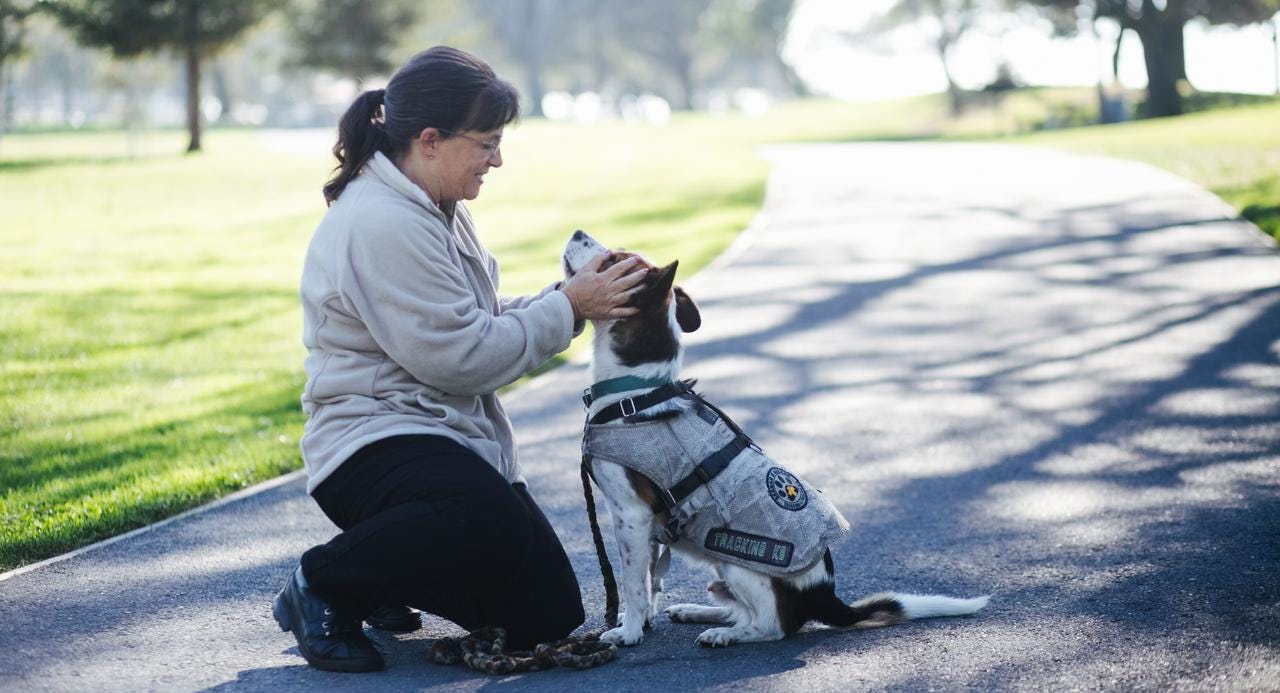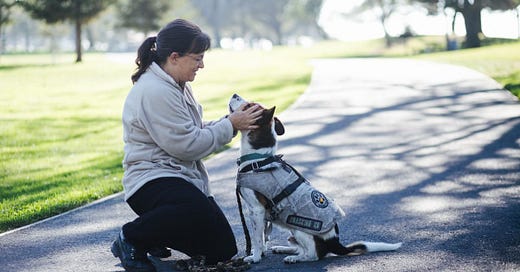I Hired a Real-Life Pet Detective
I never knew there were actual Ace Venturas until my dog went missing. But with scent-trackers and canine psychological analysis in her arsenal, this pet rescuer is no joke.

Photos by Katrina Britney Davis
We brought our daughter home from the hospital on a foggy San Francisco morning. Stepping out of the car, we handled her nervously. We climbed our stairs, opening the front door tentatively, like burglars. Inside, it was just the three of us for the first time: a quiet moment, until my phone began to ring. It was, of all people, my dog walker.
“Olive is missing,” he shouted, his voice shaky. “She ran away from the group and now we can’t find her. You better come soon.”
Olive, our black Labrador-pitbull mix with white paws and a salt-and-pepper face, was lost in Fort Funston, a wild expanse of craggy dunes and hiking trails in Golden Gate National Recreation Area, some 80,000 acres of federally protected land spanning three Bay Area counties. Fort Funston’s off-leash policy makes it a popular destination for dogs and their handlers—as well as an easy place to get lost.
“Olive knows the place, don’t worry,” my husband reassured me before leaving the house. “S…
Keep reading with a 7-day free trial
Subscribe to Narratively to keep reading this post and get 7 days of free access to the full post archives.



